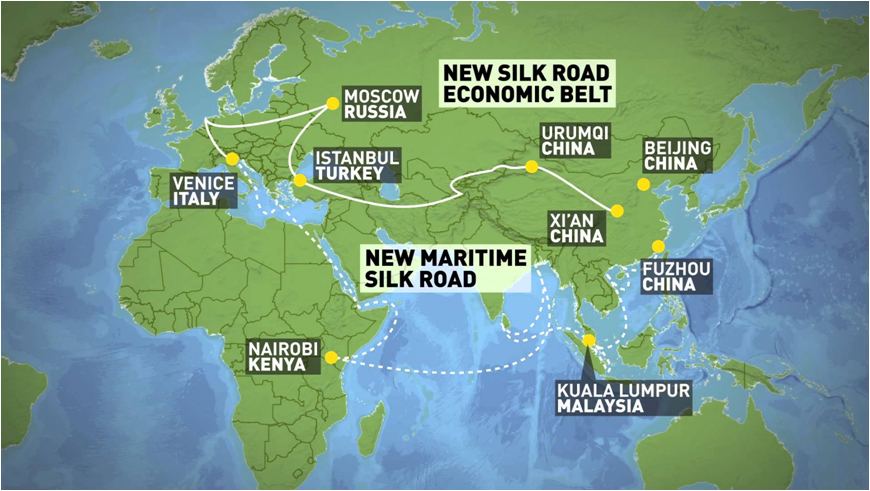The “One Belt, One Road” initiative is a crucial part of China’s development strategy to deepen economic cooperation with countries in Asia, Europe and Africa.
The Belt and Road Initiative was initially proposed by China in 2013, and refers to the Silk Road Economic Belt and the 21st Century Maritime Silk Road, focusing on developing a trade and infrastructure network that connects Asia with Europe and Africa, along the ancient trade routes of the Silk Road.
Vice Minister of Public Works and Transport, Lattanamany Khounnyvong, states that the initiative commonly seeks the development of the countries along the Belt and Road with the goal of “joining hands towards prosperity.”
Highlighting the country’s in-depth involvement in the initiative, Mr Lattanmany explained that the China-Laos railway, which began construction on Dec. 25, 2016, has been cited as the most significant project in the Eighth National Socio-Economic Development Plan 2016-2020 of Laos.
“As this is the No. 1 project of Laos, it is necessary to implement national policies well, promote socio-economic development, support the mission of poverty eradication along the railway route and help increase the incomes of local residents,” he stated.
According to the Vice Minister, Laos has been earnestly collaborating with Chinese contractors to assist local villagers, supporting infrastructure construction of roads, schools and healthcare services running along the railway.
It was also added by Mr Lattanamny that, “once completed, the railway will help facilitate people-to-people exchanges, reduce travel time and costs. The railway will also help promote agricultural production in Laos, increase income, attract more foreign investment and provide more employment opportunities.”
It is speculated that when the high-speed railway has reached completion and is fully functional in Laos, Lao people can offer services along the route, creating job opportunities for local people. Laos can also benefit from freight charges and people commuting via railway.
According to the Vice Minister of Public Works and Transport, this project will be crucial in assisting Lao people escape poverty and raise living standards significantly, also citing that the construction of the China-Laos railway will help train high-tech personnel from Laos and provide valuable experience for the country in railway construction.
As previously reported by The Laotian Times, the China-Laos railway will run a total length of 414 km, with over 62.7 percent of bridges and tunnels, linking the Mohan-Boten border gate in northern Laos and the capital city of Vientiane.
Construction of the railway is scheduled to be completed within five years, and will cost an estimated 5.8 billion U.S. dollars to fabricate; 70 percent of which will be covered by Chinese investors, and the rest covered by Laos.
The China-Laos railway is the first overseas route connecting with the railway system in China, using Chinese technology, equipment and investment.
Lao Minister of Energy and Mines, Khammany Inthirath, added that the Belt and Road initiative is a significant and indispensable way to deepen cooperation between Laos and China in a plethora of fields such as investments, industrial production, trade, finance, culture, social integration policy and infrastructure.



